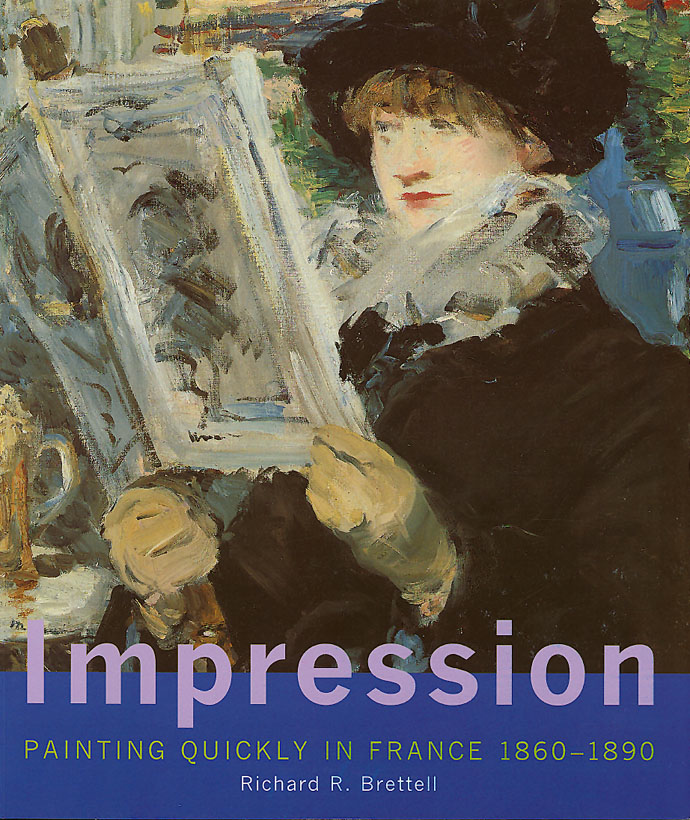
june 17–september 9, 2001
Pierre-Auguste Renoir
The early works of Pierre-Auguste Renoir (1841-1919) are tightly composed and highly finished, and his mode of execution was traditional. His painting style changed dramatically in the summer of 1869, when he joined Monet, Pissarro, and Sisley on an excursion to Bougival and Louveciennes, small towns on the Seine outside of Paris. Monet's gestural approach to painting encouraged Renoir to handle paint more freely, although Renoir's style would remain distinct from his friend's: while Monet created harsh and clearly circumscribed brushstrokes with fat pigments and flat-ended brushes, Renoir employed thinned paint to create liquid strokes of color that shimmered across his canvases. Such fluency can be seen in Road at Wargemont, where everything quivers with movement: wind gusts through the trees, sends clouds scudding across the sky, and prevents the rain from striking the earth.
In addition to quickly painted landscapes, Renoir's oeuvre is filled with rapidly executed images of the human figure. Both he and Berthe Morisot expressed the human form in disconnected strokes or touches of paint that seemed to disembody it more than form it. The man and woman in By the Fireplace are evoked not by definite contour lines but with hundreds of quickly applied overlapping gestures of the paintbrush.

Pierre-Auguste Renoir
The Grand Boulevards
1875
Oil on canvas, 51.3 x 62.5 cm
Philadelphia Museum of Art. The Henry P. McIlhenny Collection in memory of Frances P. McIlhenny

The "point" of Impressionist art was to capture the fleeting moment, the transient effect of a certain place, person, or time. Impressionist artists worked on-site with speed and directness, hoping to distinguish their works with a new freshness, immediacy, and truthfulness. Yet the paintings they exhibited were in fact almost always completed in the studio later. This beautifully illustrated book investigates for the first time the works that might truly be called "Impressions"—paintings that appear to be rapid transcriptions of shifting subjects but were nonetheless considered finished by their makers. Renowned Impressionist scholar Richard R. Brettell identifies and discusses Impressions by some of the best-known artists of the period, including Manet, Monet, Renoir, Sisley, Morisot, Degas, Pissarro, and Caillebotte.
The book surveys the various practices of individual artists in the making, signing, exhibiting, and selling of Impressions. Brettell discusses the pictorial theories behind the paintings, the sales strategies for them, and the various forms they took, including works completed in one sitting, "apparent" Impressions, and repeated Impressions. In a concluding chapter, the author considers a small group of works by Vincent van Gogh, who painted with an almost fanatical rapidity and was the only major Post-Impressionist painter to push the aesthetic of the Impression even further.
This book is the catalogue for an exhibition at the National Gallery in London from November 1, 2000, to January 28, 2001, the Van Gogh Museum in Amsterdam from March 2 to May 20, 2001, and the Clark Art Institute from June 17 to September 9, 2001.
240 pages, 9 3/8 x 11 inches
183 color and six black-and-white illustrations
2000
Published in association with Yale University Press
ISBN 0-300-08446-3 (hardcover)
ISBN 0-300-08447-1 (softcover)
